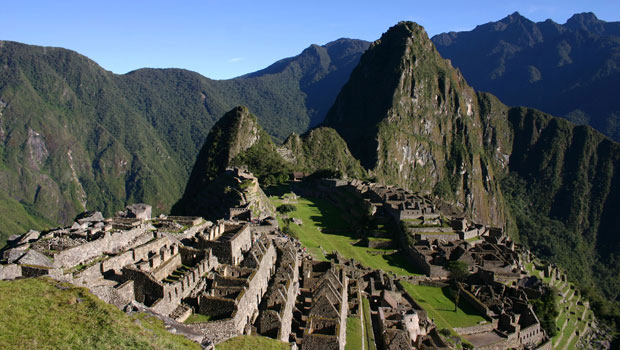
Weight loss in Peru scientifically proven
Want to lose weight without dieting? Consider a tour to Peru’s Cordillera Blanca mountain range.

As an example, if you hang a plumb line near a mountain the gravitational force will pull the line at a tiny, but measurable, angle towards its mass.
Which brings us to a new study by a team of scientists from Curtin University in Perth, Western Australia. They pulled together satellite data from highly sensitive accelerometers that map the planet’s gravitational field and correlated it with highly accurate topographical data to account for height variations in local terrain.
What they got was an unprecedented ultra-high resolution overview of Earth’s gravity. And they determined that Mount Huascarán in Peru’s central Andes has the world’s lowest gravitational acceleration, at 9.7639 m/s2. The highest was found at the surface of the Arctic Ocean, at 9.8337 m/s2.
In other words, you could trade in the bathroom scale and full-length mirror and climb to the heights of Peru’s Andes, where you would weigh less, albeit in terms of an infinitesimal variation in free-fall gravity.
All it would take to prove the theory would be to leap from a helicopter above Huascarán’s 22,000-foot summit and time the fall.
The NewScientist Web site put it this way:
“These differences mean that in the unlikely event that you found yourself falling from a height of 100 metres at each point, you would hit the surface in Peru about 16 milliseconds later than in the Arctic. You would also lose 1 per cent of your body weight in moving from the Arctic to the Peruvian mountaintop, although your mass would not change.”
If you like this post, please remember to share on Facebook, Twitter or Google+
 Inca Rebellion – Puruchuco Exhibit Opens at Peru’s National Museum
Inca Rebellion – Puruchuco Exhibit Opens at Peru’s National Museum  Kuelap Fortress open again, but not for foreign tourists just yet
Kuelap Fortress open again, but not for foreign tourists just yet  Mandatory tour guides and fixed routes coming soon for Machu Picchu
Mandatory tour guides and fixed routes coming soon for Machu Picchu  Record breaking 1.1 million tourists visited Machu Picchu in 2012
Record breaking 1.1 million tourists visited Machu Picchu in 2012  Oprah’s O magazine spotlights co-founder of Maki International as Local Hero
Oprah’s O magazine spotlights co-founder of Maki International as Local Hero  Underwater tomb discovered in Lambayeque along Peru’s northern coast
Underwater tomb discovered in Lambayeque along Peru’s northern coast  Lost Huacas: the challenge of reclaiming Lima’s pre-Columbian past
Lost Huacas: the challenge of reclaiming Lima’s pre-Columbian past  The Spectacular Return of Spectacled Bears at Machu Picchu
The Spectacular Return of Spectacled Bears at Machu Picchu